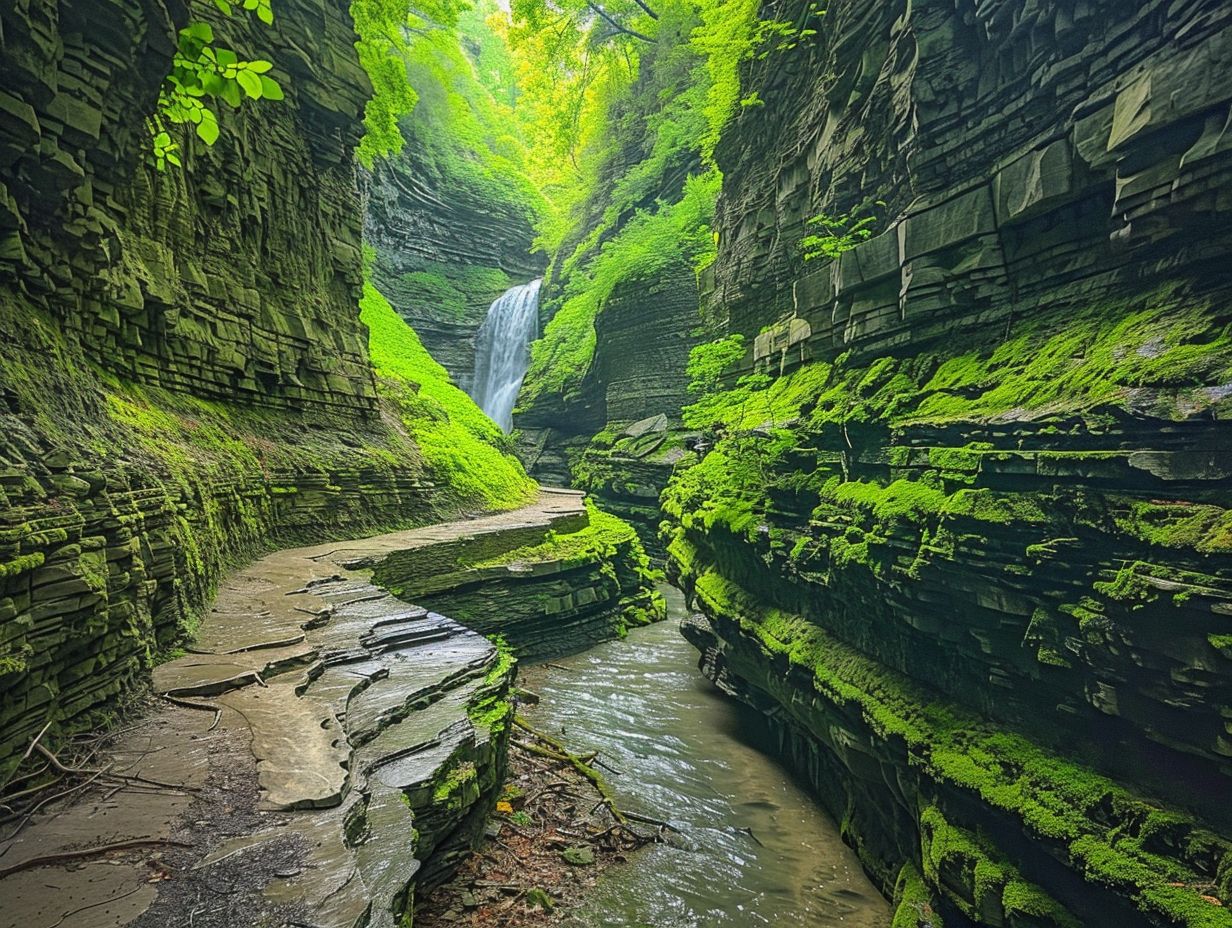Watkins Glen State Park, located in Schuyler County, New York, is renowned for its breathtaking gorge and numerous waterfalls. The park’s flora is diverse and includes various plant species adapted to the unique environmental conditions of the gorge.
The Contrasting Ecosystems of the Gorge
The gorge is characterized by a south-facing side that is warm and sunny, hosting sun-loving plants such as goldenrod, Queen Anne’s lace, white ash trees, staghorn sumac, white oaks, and even poison ivy. On the other hand, the north-facing side is cool and shady, providing a habitat for shade-loving plants like eastern hemlock, yellow birch, and ferns and mosses. The differences in temperature and sunlight exposure between the two sides create distinct ecosystems, resulting in visible differences in plant life and vegetation density.
Geology and Its Impact on Plant Life

The park’s geology plays a crucial role in shaping its plant life. The gorge was formed by Glen Creek, which flows north into Seneca Lake, reaching the Seneca River and eventually flowing into Cayuga Lake. The creek’s incision into the shales of the Genesee Group, facilitated by numerous joints in the bedrock layer, has led to the formation of a gorge dotted with waterfalls, plunge pools, and other features. This geological process has created various microhabitats, further enhancing the park’s plant diversity.
Aquatic and Wetland Plants
Watkins Glen State Park’s flora is not limited to terrestrial plants. The park is also home to various aquatic and wetland plant species. These species thrive in the park’s numerous streams, waterfalls, and wetland areas, contributing to the overall biodiversity of the park.
Exploring the Park’s Plant Life
For those interested in exploring Watkins Glen State Park’s plant life, several trails offer excellent opportunities to observe and learn about the park’s flora. The Gorge Trail, in particular, provides stunning views of the park’s waterfalls and allows hikers to observe various plant species along the way. However, it is essential to follow park rules and regulations, such as staying on designated trails and not picking wildflowers, to ensure the preservation of the park’s delicate ecosystems.
Unique Plant Species at Watkins Glen State Park
Watkins Glen State Park is home to a variety of unique plant species that thrive in the park’s diverse habitats. Here are some of the notable plants found in the park:
| Plant Species | Characteristics |
|---|---|
| Eastern Hemlock | A tall, evergreen conifer that prefers the cool, shady conditions of the north-facing gorge side. |
| Yellow Birch | A deciduous tree with distinctive yellow-gray bark that grows in the shady areas of the gorge. |
| Ferns and Mosses | A variety of fern and moss species that carpet the cool, moist areas of the gorge. |
| Goldenrod | A vibrant yellow wildflower that blooms in the sunny, south-facing areas of the park. |
| Queen Anne’s Lace | A delicate, lacy white flower that thrives in the park’s sunny meadows and open areas. |
| Poison Ivy | A common, but potentially hazardous, plant that can be found in the park’s sunny areas. |
Preserving the Park’s Delicate Ecosystems
Watkins Glen State Park’s unique geological features and environmental conditions have resulted in a rich and diverse flora, making it an ideal destination for nature enthusiasts and botanists alike. However, it is crucial to remember that the park’s ecosystems are delicate and require careful stewardship to ensure their preservation. Visitors are encouraged to follow park rules and regulations, such as staying on designated trails and not picking wildflowers, to help protect the park’s plant life and maintain its natural beauty for generations to come.
References:
– Watkins Glen State Park on iNaturalist
– The Geology of Watkins Glen State Park
– Watkins Glen State Park Check List on iNaturalist
– Watkins Glen State Park Geology
– Watkins Glen State Park Trail Map

